ASUS VG236H 23-inch 3D Display Review: 120Hz is the Future
by Brian Klug on August 7, 2010 2:48 AM ESTLegacy Titles, 'Good' Games: Work with 3D, but hardly Flawless
The most common problem in older titles was that crosshairs rendered at screen depth. Two titles where this really stuck out were Battlefield Bad Company 2, and to a lesser extent games running Valve’s Source engine.
To be fair, NVIDIA offers the ability to enable a 3D Laser Sight for certain games, which replaces the distracting normal cursor in some games.
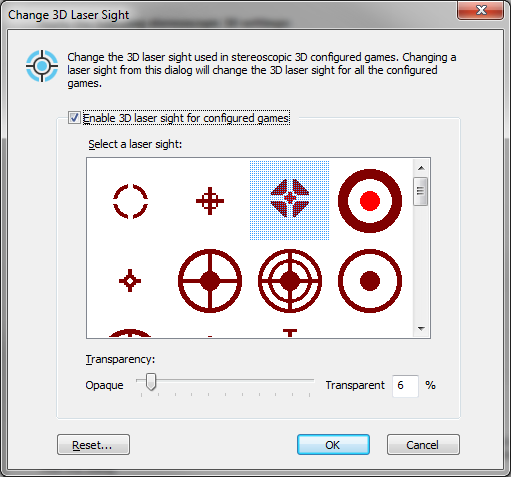
In general, it’s distracting when things are being rendered at screen depth. A good example is how in games like TF2 or DOD:S, kill notifications in the top right, chat text, weapon selection, and players names all render in 2D at screen depth. You can get used to it, but it looks out of place. There’s also the occasional bit of content that just isn’t 3D as well.
When you fire up a title, NVIDIA gives you an overlay in the bottom right with information about the game’s compatibility, as well as what settings should be enabled or disabled for optimal 3D quality. The interesting bit about 3D is that you can really get a feel for when game engines are doing hackety things like rendering HDR at screen depth instead of in 3D - all these little flaws show in 3D mode on older titles.
The other problem is simple - hold a weapon up to a wall, and you’ll get the perception that your gun is going into the wall, which is actually closer to you. This is that age old clipping problem rearing its ugly head, now in 3D. It’s impossibly difficult to describe, but weapons will appear to dive into materials that they can’t. In the past, with 2D, this wasn’t a problem, but the result just looks off in 3D.
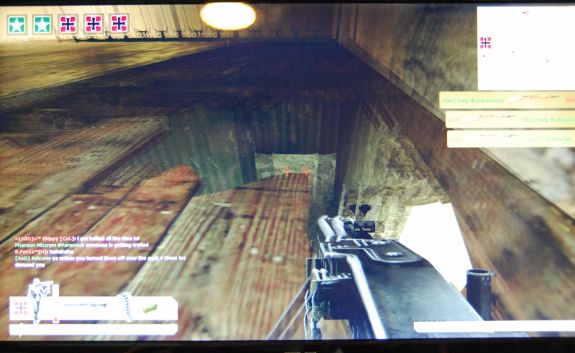
See how the MG42 goes into the wood? It's even weirder when it appears to have depth.
The reality is that Excellent and Good rated titles work very well, but just haven’t been designed for 3D. The result is that while the game content is 3D and looks beautiful, things like menus, crosshairs, and information all on the edges makes the experience a bit jarring.
NVIDIA 3D Vision Ready: Play These in 3D
But what about NVIDIA’s 3D Vision Ready titles? New games designed for 3D? I decided to try a little experiment. I decided I would play Metro 2033 through, beginning to end, entirely in 3D. I would then repeat the same thing in 2D and see what I thought.
I want a 120Hz 3D monitor and kit of my own now.
The difference in the 3D experience here compared to ‘good’ or even ‘excellent’ titles is mind-blowing. What makes Metro 2033 a particularly good example is how everything is 3D. The initial menu screen is 3D, everything is 3D. There isn’t a jarring difference between content that obviously was never intended to be viewed in 3D and the rest of the game - in Metro 2033 it just works.
Things like dust are entirely volumetric, not just 2D speckles. There’s depth and detail on weapons, objects, and textures. The game is just completely immersive in a different way. It’s difficult to explain just how much more engaging this game feels in 3D compared to 2D. Suffice it to say things like the very final level where you’re running on floating platforms or in a maze away from the dark ones, or up in Ostankino tower, are amazingly different and trippy. Honestly, Metro 2033 in 3D is close to if not entirely NVIDIA 3D Vision’s killer app. 3D vision does exact a considerable price on framerate though. With Metro 2033 I settled on 1680x1050 on High with the DX10 codepath to get playable framerates. Pushing the GTX 470 much further reduced FPS too much.
The only caveat which remains is the same as found in other 3D systems - you do lose some brightness, and you’ve got to wear glasses, which is annoying if you already wear glasses to correct your vision.
As I’ll show in a second, the VG236 is indeed a very bright display, but you really need every last nit to keep things lit up when in 3D mode. Just by nature of using shutter glasses, everything gets dimmer. I wouldn’t say it was a problem when playing 3D games, but I did increase gamma in Metro 2033 just a bit because it’s such a dark game most of the time.
For me, the bottom line is this. Virtually every game is going to benefit from a 120Hz panel because you won’t get visible tearing until your framerate is over 120 fps. In older games where even on maximum everything you’re well over 100, it’s nice to actually see some of those frames. To that extent, games do appear smoother to me visually. For 3D content, 3D Vision Ready titles are a whole different level of immersion compared to older titles that - while they do work - have distracting 2D elements. With time, hopefully more games will be developed with 3D in mind and lose the distracting bits that otherwise diminish the experience.


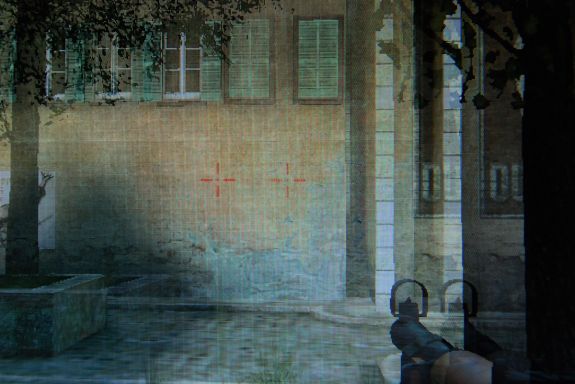
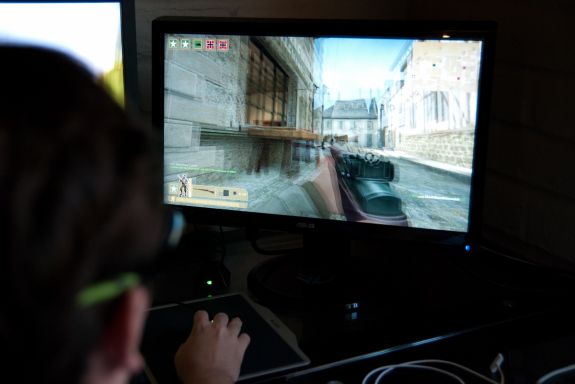
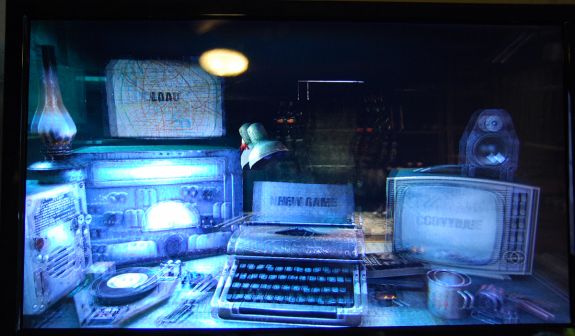
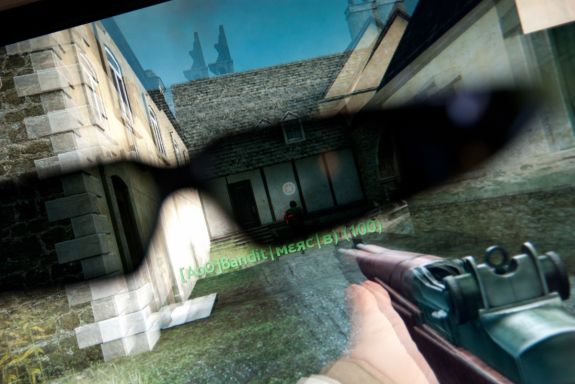








121 Comments
View All Comments
killerclick - Saturday, August 7, 2010 - link
Stop trying to push these stupid fads, I'm not buying 3D! Ever!Etern205 - Saturday, August 7, 2010 - link
3D monitors are just regular LCD screens which support up to 120Hz. Enabling 3D requires those special glasses and it's entirely up to you whether you want to enable it or not.There is not such thing as a 3D monitor as if there is, then you will need to wear the glasses every single time you use it.
And imo, that 3D logo on the stand looks hideous. Much like a ricer who puts sticker of tuners just to make it look cool or something.
Iketh - Saturday, August 7, 2010 - link
... but don't change the camera perspective when taking comparitive photos. The height adjustment images don't help a bit. Leave the camera in the same position for both.Etern205 - Saturday, August 7, 2010 - link
I thought all monitors are "3D" ?:P
smookyolo - Sunday, August 8, 2010 - link
That's what they'd like you to think, yes ;)dingetje - Sunday, August 8, 2010 - link
yes, and the old crt's are even more 3D than the new technology ;)HDPeeT - Saturday, August 7, 2010 - link
Thanks for the great review! I'm glad to see that there are professional sites out there that appreciate the advantages 120hz displays bring to the table besides just the 3D stuff.I know, I know, there are plenty of people out there that are really excited about 3D gaming and movies, but for me, it's all about the faster refresh and (hopefully) lower input lag.
The one thing I'm little confused about is how you reached the conclusion that the display has 3.9ms of lag. When you say "The VG236H consistently lags 1 frame from the FP241W.", wouldn't this imply that it has at least ~8ms of lag at a 120hz refresh (or even 16ms at 60hz (still not clear on that)?
Mumrik - Saturday, August 7, 2010 - link
Page 1: "On a technical level, the necessity for 120Hz arises from the need to drive two 60Hz images for each eye."That would take 240hz. You mean ONE 60Hz image for each eye.
cactusdog - Saturday, August 7, 2010 - link
Brian, Do you see the same benefits (of smoother motion on the desktop) when the VG236H is set to 60Hz?7Enigma - Monday, August 9, 2010 - link
Good question. The obvious answer is no, but I agree it should quickly be tested.